Energist UltraPlus VPL™ System
The Energist UltraPlus is used for hair removal/reduction of unwanted hair, hypertrichosis or hirsutism, cosmetic skin rejuvenation and active acne. It emits a high energy pulse of non-ionising radiation in the region of 405nm to 950nm of the electromagnetic spectrum. The maximum energy density from the system is 51 J/cm2.
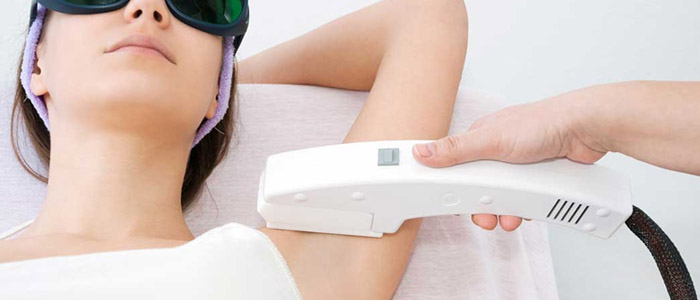
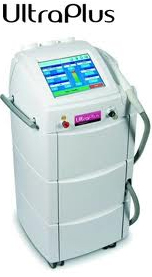
The system has been designed to be versatile and safe, with an in-built safety feature that will identify which handpiece has been attached. The output of the Energist UltraPlus system is delivered to the skin, via optical coupling gel, from an ergonomically designed handpiece. Pre-set treatment parameters are included that have been determined through extensive clinical experience.
The Energist UltraPlus system has the capability of effective, permanent reduction of hair utilising a technique known as Selective Photothermolysis, or more simply, selective heating through the absorption of light.
The Energist UltraPlus system can achieve good results on clients. Key to performing successful treatment is a clear understanding of each Client's skin type and careful selection of the most appropriate system setting to achieve the desired results. Results may vary from Client to Client due to many interrelated physiological factors, so Operators need to be capable of working closely with Clients in order to achieve desired results. The most common system settings that have been shown to produce effective treatments on a repeatable basis are presented with the recommended treatment process and the results that can be expected by the Client. From time-to-time these recommended settings are updated as new treatment information becomes available.
New Look Medi Spa is the Best Laser Hair Removal Place with FDA Approved Painless Lasers, Experts on board offering Affordable prices at Laser Hair Removals of Gentle Max Pro Laser , Candela Laser Hair Removal , IPL Laser Hair Removal, Brazilian Laser Hair Removal and Full body Laser Hair Removal in Northern Virginia.
Hair Structure
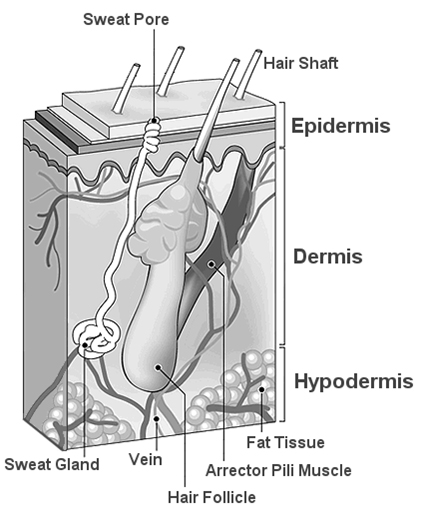 The hair is composed of a protein called keratin. The hair itself is arranged in three layers, an outer cuticle, middle cortex and central medulla. If the hair is coloured it is due to the presence of pigments- either eumelanin (black or brown) or pheomelanin (red or yellow). If these pigments are lacking the hair is white. Canites is the term given to grey hair. Hair grows from a follicle, see diagram below:
The hair is composed of a protein called keratin. The hair itself is arranged in three layers, an outer cuticle, middle cortex and central medulla. If the hair is coloured it is due to the presence of pigments- either eumelanin (black or brown) or pheomelanin (red or yellow). If these pigments are lacking the hair is white. Canites is the term given to grey hair. Hair grows from a follicle, see diagram below:
The walls of the follicle form the outer root sheath of the hair and the lower part of the follicle widens out to form the hair bulb that contains the germinal matrix, the source of hair growth. Dermal tissue projects into the follicle base to form the dermal papilla, and this has a network of capillary blood vessels to supply oxygen, energy and the amino acids needed for growth. Melanocytes are present in the upper part of the papilla, producing pigment granules that are distributed throughout the cortex.
The dermal papilla has always been accepted as the central growth area for each hair, and its removal has frequently been the sole aim of hair removal systems. However, more recently a second structure, the bulge, has been identified as a further source of growth cells, which can restart growth from a follicle even after the destruction of the papilla.
In the follicle the hair is surrounded by an inner root sheath that has three layers. Henley's layer is one cell thick and lies to the outer root sheath. Huxley's layer is two or three cells thick and is in the middle of the sheath. The cuticle of this inner root sheath interlocks with the cuticle of the hair. Both the hair and the inner root sheath grow at the same rate, but the inner root sheath breaks down about two-thirds of the way up the follicle, so only the hair emerges past the skin surface. Uncut hairs have a pointed tip.
Hair Growth Cycle
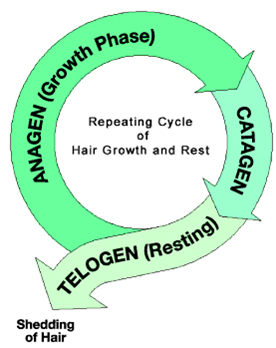 Hair growth varies greatly between individuals and the specific area of the body. Scalp hair, as example, grows an average of 2.5mm weekly. Leg hair, by contrast, grows at about half that rate. The life cycle of hair follicles, that is, the repeating cycle of growth and rest phases, affects overall hair production. No new hair follicles are produced after birth with the appearance (and disappearance) of hair being the result of changing ratios in the growth/rest cycle. This life cycle is distinguished as three separate stages:
Hair growth varies greatly between individuals and the specific area of the body. Scalp hair, as example, grows an average of 2.5mm weekly. Leg hair, by contrast, grows at about half that rate. The life cycle of hair follicles, that is, the repeating cycle of growth and rest phases, affects overall hair production. No new hair follicles are produced after birth with the appearance (and disappearance) of hair being the result of changing ratios in the growth/rest cycle. This life cycle is distinguished as three separate stages:
The cycle of life for each follicle begins with the anagen phase, which is the eawakening of the follicle's growth stage where a newly formed hair begins to grow. This growth phase continues for a time lasting for as little as several weeks (like the moustache area) or lasting as long as several years (like the scalp area). Depending on the area of the body, gender, hormonal and other factors, growth lasts for varying lengths of time.
Ultimately, the level of growth begins to slow and the second stage of slowing or arrested growth occurs, which is known as the catagen phase. This slowing ontinues into the third and final phase or period of inactivity/rest. On average (for body areas) 1% of the follicles are in the catagen stage.
Finally during the third stage, the resting or telogen phase, the hair has separated from the papilla and is no longer provided with nourishment. At this point, no more new hair cells are formed and the inactive hair remains in place only by a thin strand of epidermal cells. By the end of the telogen phase, the hair shaft is now only held in place mechanically, and can be shed by brushing or combing. The hair shaft remaining in place at the end of its growth cycle is called a club hair and it is not uncommon for a club hair to remain in place while a newly formed anagen hair is beginning to emerge, which ultimately forces the club hair to be shed. On average 29% of the follicles are in the telogen stage.
Whether the club hair is shed or not, the hair follicle will once again become active and begin to grow a new anagen hair. This process of growth and rest continues throughout our lifetime. In humans, follicle activity is generally scattered between all phases of the life cycle whilst other mammals have a more orderly growth pattern, which shows as noticeable periods of hair growth and shedding.
Generally, a follicle cannot be properly treated (and thereby destroyed) during its resting phase, and since up to half the hairs could be in the resting phase at any particular time, it is clear that effective treatment of all hairs will take some time.
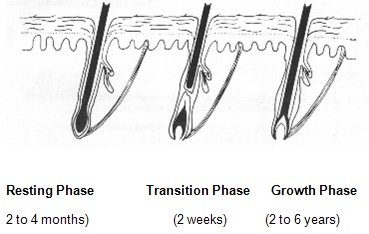
How does VPL™ WORK?
The technical term for the VPL™ process is selective photothermolysis or more simply, selectively heating through absorption of light. The applied light is absorbed by the melanin, the chromophore that gives hair its colour, in the hair with the result that the hair is heated up. This heat is transferred by the process of conduction to adjacent cells, including those of the papilla and the bulge. Provided light of sufficient intensity and of selected wavelength (i.e. colour) is applied to the area the resultant temperature rise will be sufficient to cause the surrounding cells to die. Destroying the cells prevents the follicle from producing further hair growth, i.e. effectively removing the hair growing potential of the follicle. Optimum results are obtained when the hair colour is significantly darker than the skin, with blond hair and dark skin being the most difficult to treat.
The Energist UltraPlus system when used with the Depilation Applicator produces Variable Pulsed Light of wavelengths from 610nm to 950nm. Using filtered light from this region of the spectrum will ensure that energy passes into the melanin of the hair without causing damage to the skin or blood vessels. The objective in preferentially heating the hair is to achieve a temperature of 70OC for at least 1ms, which will be sufficient to destroy the follicle and the associated germ cells.
Number of treatment sessions required
Generally, between four to six treatment sessions are required, although it depends upon the area being treated. The aim of each treatment is to reduce the hair density successively to a level that is satisfactory to the client. The number of treatment sessions may increase when treating darker skin or lighter hairs since the percentage of hair removed during each treatment will be reduced in these instances.
What to expect following treatment
The immediate after effect is that the treated area should become slightly red, particularly around the hair. Typically, this redness will disappear in a matter of a few hours (and often in just a few minutes) with the skin then returning to its normal colour. The Client should be advised that the hair will still be in place in the follicle since the treatment, unlike some laser treatments.
During the next ten days or so the hair will appear to continue growing, albeit more slowly than before. What actually is happening is that the hair is no longer supported by the follicle but is being pushed out by the growth of the epidermis which is still in close contact with the hair shaft. If left alone, the treated hairs will fall out naturally after a period of between one and three weeks, dependent on the depth of the hair root. If the Client does not want to allow the hairs to fall out naturally, then they can be removed manually (e.g. by tweezing) after about 7 days. Prior to this time the hair is acting as an effective barrier to infection of the inflamed follicle, and so they should not be removed.
Skin Therapies
The concept of rejuvenation of aged and sun damaged skin is currently receiving considerable interest within the professional beauty industry and the general public. There exists today a rapidly growing demand for safe, simple techniques for improving skin textures, colour, pore size, broken blood vessels and wrinkles. The term Skin Rejuvenation applies to any form of procedure that improves the texture and look of the skin, whereas Photorejuvenation means the use of a light-based therapy to induce these improvements.
Current treatments available for skin rejuvenation include:
- Cosmeceuticals: hydrate the skin and induce minor surface changes
- Dermabrasion: layers of skin are actually 'sanded away'
- Chemical peel: uses acid solution to burn away layers of skin
- Non-Ablative Lasers: good results can be obtained, but limited to what can be treated. Expensive equipment and procedures
- Laser Resurfacing: whilst providing the best results, there are significant side-effects associated with this procedure
IPL™ skin therapy treatment is an FDA approved process that has many advantages over other treatment modalities as it effectively treats a combination of changes in the skin, from the signs of ageing and sun damage to thread veins, pigmentary abnormalities and cosmetic imperfections. In addition, VPL™ treatment is known to reduce pore size and leave a smooth revitalised appearance to the skin as the light energy stimulates an increase in the production of new collagen.
It is clear that there is considerable demand for this new generation of nonablative reatment that has shown to give dramatic improvement for the visible signs of ageing and photo-damage with low risk and, perhaps most importantly, no Client 'downtime'. A number of independent clinical studies have been undertaken with the findings confirming the efficacy of IPL treatment. Additional studies are currently underway across the world to establish in more detail how best to utilise the advantages of this new noninvasive method of reversing photo ageing.
The Operator with the necessary introduction to skin rejuvenation, followed by an explanation as to how the Energist UltraPlus system can achieve good results on a range of skin types and conditions. Key to performing a successful and safe treatment is having a clear understanding of each Client's needs, their skin type and then the careful selection of the most appropriate system settings to achieve the desired result. Results will vary from Client to Client due to many inter-related physiological factors, and so Operators need to be capable of working closely with Clients in order to achieve good results.
Photo-Damaged Skin
Photo-damaged skin occurs as the result of excessive exposure to ultraviolet (UV) light, which induces epidermal and dermal changes. Skin affected in this way is characterised by thinning of the epidermis and dermis, coarse skin texture, wrinkling, telangiectasias and changes in pigmentation.
The overall appearance of photo-damaged or sun exposed skin relates to the resultant UV damage of structural components such as collagen and elastin fibres. Appearance, however, is also affected by genetic factors, intrinsic factors, disease process such as rosacea, and the overall loss of cutaneous elasticity associated with age. More people now have extended periods of sun exposure and, coupled with the thinning of the ozone layer and other factors, this has resulted in visible signs of ageing, damage and disease evident in ever-younger people. People in their twenties and thirties are now witnessing solar elastosis, telangiectasias, solar lentigines and rhytide formation. Treatment for photo-damaged skin involves more than simply addressing wrinkles, which will produce limited results in one aspect only. Rather, treating each of the different components of photo-damaged skin will result in a more dramatic visible improvement.
Acne Vulgaris
Early inflammatory acne lesions are characterised by the pilosebaceous duct becoming infiltrated by Propionibacterium, a common cutaneous commensal. The improvement of acne lesions in individuals after exposure to sunlight is explained by the photosensitivity of the P. acnes bacterium which is a porphyrin-containing organism that is killed by exposure to specific wavelengths of light following the release of singlet oxygen species.
With the highest sensitivity at 320nm (Near UV) with a secondary maximum at 415nm (blue). This corresponds to the absorption maximum of the porphyrins produced by P.acnes., which are likely to acts as chromophores. Therefore, irradiation of P.acnes with light in the blue region could result in photodynamic stimulation of porphyrins stored in the bacteria, singlet oxygen production and bacteria killing. Clinical research has established the photosensitivity of protoporphyrin. The absorption characteristics for protoporphyrin IX (PpIX) include significant absorption peaks at 508nm, 534nm, 578nm and 630nm. As blue light has been calculated to penetrate to less than 0.25mm in depth, thus is unlikely to activate the porphyrins in the acne lesion. Consequently, longer wavelengths with a deeper penetration will be beneficial in the treatment of acne by exciting the porphyrins situated deeper within the acne lesion. Therefore, the more deeply penetrating longer wavelengths of broadband light will achieve greater penetration depth thus reaching acne bacteria in the pilosebaceous duct.
It has also been hypothesised that light absorption by target cells also induces cell membrane permeability resulting in a proton influx and dissipation of pH gradients across the cell membrane. This effect, coupled with that of the singlet oxygen species induced by PpIX provides a micro-environment unsuitable for P. acnes.
Skin Rejuvenation
Up until recently, the 'in vogue' techniques for reducing or eliminating facial rhytides or wrinkles included various topical agents such as glycolic acid, retinoids, ascorbic acid, a variety of chemical peeling agents, dermabrasion, and laser skin resurfacing. Of these techniques the most effective methods for improving photo-damaged skin were invasive, which had major disadvantages of requiring a significant recovery period following procedures such as laser skin resurfacing. In addition, scarring has become more common place with each of the invasive procedures including laser resurfacing.
Laser Resurfacing works on the principle of causing a controlled thermal burn, which results in the removal (or ablation) of the upper layers of skin. The associated thermal damage increases the rate at which new collagen is produced and thus improving the appearance of wrinkles. The process is not about resurfacing the skin with new tissue, but rather is about allowing a controlled scar to evolve that shrinks over time, a process called contracture. This controlled contracture is what gives the appearance of reduced wrinkling of the skin. Laser Resurfacing involves the use of general (or sometimes local) anaesthesia, 2-3 days stay in a hospital and constant bandage changes for 3-4 weeks post-procedure. Research has shown that 80% of potential patients withdraw due to the high risk of side effects.
The thermal effects on tissue are both time and temperature dependent, as shown below:
- From 42 to 45 deg.C: reversible protein and membrane changes occur
- From 50 to 85 deg.C: denaturing the structure of cellular proteins
- From 75 to 80 deg.C: irreversible collagen coagulation takes place
- Above 100 deg.C: vaporization of tissue water occurs resulting in ablation and carbonization.
Whilst good results can be obtained, these are often tempered by the presence of a number of complications. As the skin has been damaged, its natural barrier protection to infection is significantly reduced, so great care must be taken until the area has healed completely. Postoperative hyperpigmentation occurs after almost any cutaneous laser procedure, regardless of type. It is particularly common in patients with darker skin and whilst in the majority of cases it will only last for three or four months, it can be permanent. Postoperative hypopigmentation is also possible, particularly after multiple treatments and is again common in darker skin types. Delayed permanent hypopigmentation is a well recognised complication particularly to CO2 laser skin resurfacing as is persistent Erythema.
Blister formation (vesiculation) is caused by thermal damage induced by the laser when excessive fluences are used or the absorption of laser energy is increased due to the presence of an epidermal chromophore (e.g. melanin in a tan). Without appropriate postoperative care undesirable 'crusting' is also inevitable following laser resurfacing. Perhaps the most serious of laser complication is scarring. Cutaneous laser resurfacing carries the greatest risk of scarring because of the intended destruction of dermal tissue as well as the increased risk of infection in the de-epithelialized skin. Factors affecting scarring include the number of treatment passes and the energy used and it is worth noting that this complication occurs even when the treatment is performed by the most xperienced surgeon or physician.
Sun Damage Treatment
Sun damage treatment includes aspects of both pigmentation treatment and thread vein treatment (i.e. broken capillaries, liver spots, irregular pigmentation) but also includes fine lines and wrinkles. Exposure to UV light destroys skin cells thereby slowing down the growth of new skin and the production of collagen. Light energy in the wavelength range 530 to 585nm is known to have a stimulating effect on fibroblasts thereby increasing their production of collagen. The increase in blood flow to the region will also bring fresh supplies of oxygen and nutrients to the cells, which will assist in the removal of waste. By traumatising the epidermis and dermis the skin will be encouraged to go into 'repair mode' to reduce fine lines and wrinkles.
Acne Vulgaris Treatment
As discussed previously, there are several absorption peaks for PpIX which are covered by the output of broad-band light using the acne applicator with wavelengths covering 415nm & 630 – 950nm (and also the 530nm – 950nm filter).
With UltraPlus VPL™ both short (and potentially harmful) UV wavelengths and longer IR wavelengths (which might cause excessive tissue heating) are filtered out and an appropriate selection of micro-pulses in a longer single pulse train ensures precisely dosed energy to target endogenous chromophores and provide optimum effectiveness in stimulating the body's own immune system response. The pulse selection is unique in that it allows for substantial cooling of the skin between each micro-pulse delivery of energy. This limits the pain associated with the treatment and subsequent side-effects.
It has also been shown that post pulsed light treatment there is a stimulation of proteins leading to the increased production of collagen Type I & III and elastin. This can assist in the improvement of skin texture and rapid healing of the acne lesions. This may in turn lead to a reduction in the scaring associated with acne. Patient Information Leaflet
Energist ULTRA™ Variable Pulsed Light System
The Energist UltraPlus system is the most advanced hair removal & skin rejuvenation product available. Utilising state-of-the-art Variable Pulsed Light (VPL™) technology, the ULTRA™ System can be set-up to ensure the optimal parameters to provide a safe, fast and effective treatment for every individual.
What makes this System special?
Traditionally, most cosmetic procedures have been associated with lasers. As technology has progressed, research has shown that Intense Pulsed Light units, and in particular Variable Pulsed Light (VPL™) Systems, are regularly producing better results than the laser systems originally available. Pulsed Light units are non-laser, emitting light across a broad range of wavelengths that are preferentially absorbed by the appropriate structure in the skin. The ULTRA™ System is designed such that each light pulse comprises a number of rapid shorter pulses. These 'variable pulses' ensure more controlled absorption by the appropriate structures whilst minimising heating of the surrounding skin. This means that a greater range of hair and skin types can be safely and effectively treated than was previously possible.
How does it work?
Depending upon the treatment being carried out, light emitted from the ULTRA™ System is preferentially absorbed by the specific structure in the skin. For hair removal, the melanin in the hair absorbs this light and is heated to a temperature that permanently inhibits the hairs' growth. For skin rejuvenation, various structures can absorb the light and repair the damage caused by ageing and the sun.
What conditions can be treated?
The ULTRA™ System has been designed to provide both safe and effective hair removal and skin rejuvenation treatments. Hair Removal: Unwanted hair can be removed from all parts of the body, including legs, chin, upper lip, bikini line, underarm, back and chest.
Skin Rejuvenation: Many skin complaints caused by ageing and sun damage can be successfully treated using the yellow light produced by the ULTRA™ System. These include: redness, rosacea, age spots, freckles, pigment changes, skin texture and fine lines.
Recent studies have shown that even active acne (Acne Vulgaris) has responded very well to phototherapy using yellow light.
Who can be treated?
The versatility of the ULTRA™ System provides a safe and effective treatment for most hair and skin types, but a consultation with a trained therapist will provide you with a complete treatment programme. As the treatments have little or no visible sideeffects, effective procedures can be performed quickly with no downtime.
Treatment Process
After a full consultation with a trained therapist, a comprehensive treatment programme can be developed to match your needs and requirements. Depending upon which treatments are to be undertaken the basic procedure will stay the same: the area to be treated will be prepared and the applicator head will be stepped across to ensure complete coverage. Due to the large applicator head treatments can be performed quickly, which we know is important with today's hectic lifestyle.
Treatment Process
After a full consultation with a trained therapist, a comprehensive treatment programme can be developed to match your needs and requirements. Depending upon which treatments are to be undertaken the basic procedure will stay the same: the area to be treated will be prepared and the applicator head will be stepped across to ensure complete coverage. Due to the large applicator head treatments can be performed quickly, which we know is important with today's hectic lifestyle. Is there anything I need to do prior to, or after, treatment?
It is advisable to stay out of the sun, and away from tanning beds, for at least 6 weeks prior to any treatment to ensure that your skin is as close as possible to its natural colour. You must ensure that all cosmetics are removed from the treatment area with a good cleanser and then allow the skin to settle. As the skin may be slightly more sensitive post-treatment it is recommended to use skin products developed for sensitive skin and again avoid the sun or tanning beds.
When will I see results?
Dependent upon the treatment performed and the area treated, results will be noticed after a series of treatments over a period of months. This is due to the body's natural hair growth cycles and skin renewal. There is no 'magic wand' that will make everything perfect, but a good skincare regimen that is devised in conjunction with your therapist will ensure the optimum results that you desire.
New Look Medi Spa is located in Herndon , Ashburn Virginia, Which is only few miles from Reston Virginia, Sterling Virginia, McLean Virginia, Chantilly Virginia, Fairfax Virginia, South Riding Virginia, Arlington Virginia, Alexandria Virginia, Manassas Virginia, Leesburg Virginia and Springfield Virginia.
